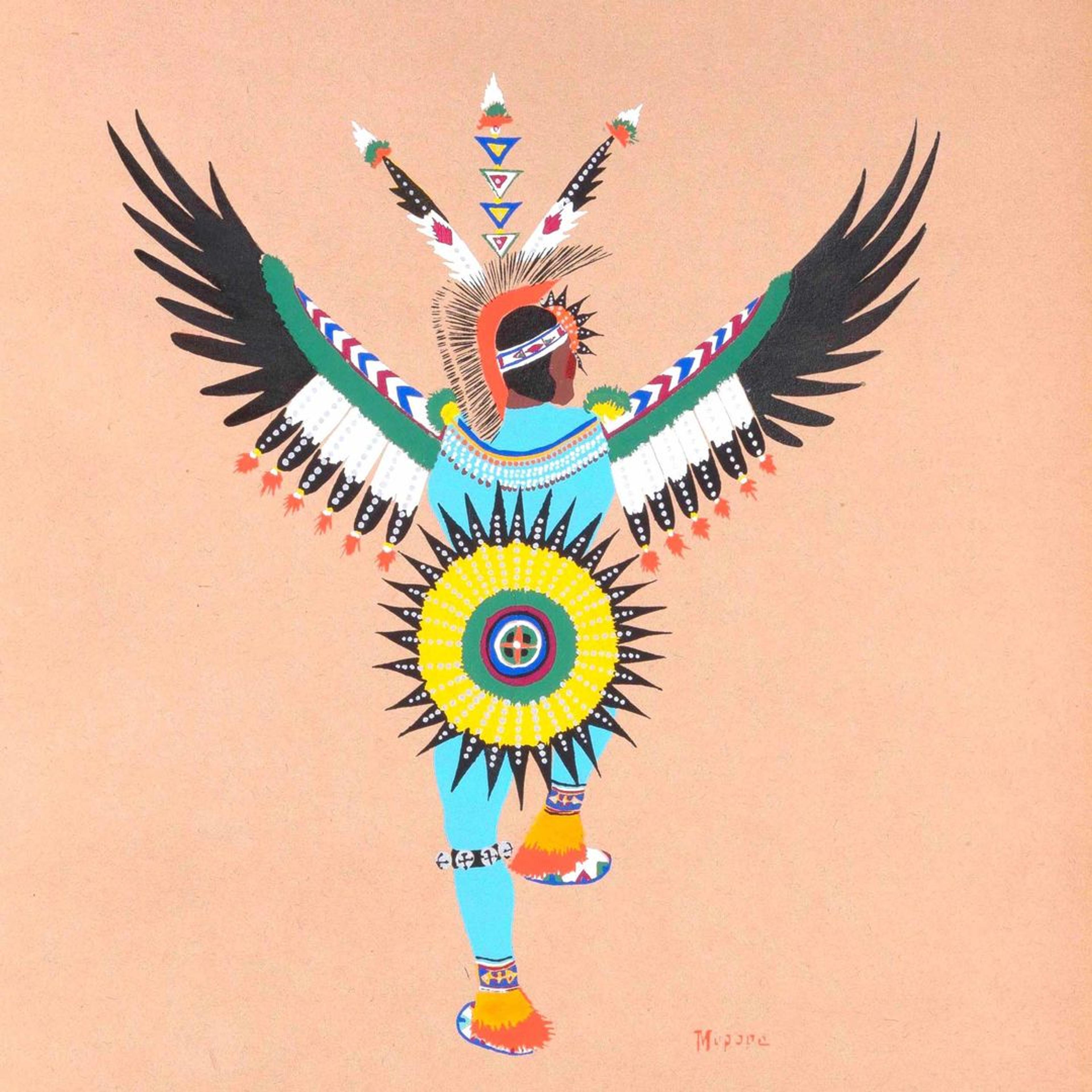Watson Library is celebrating Native American Heritage Month this November in a two-part series highlighting the library’s collection of Native American art publications.
Part one features a selection of Native American art books from our special collections' holdings including limited edition portfolios, monographs, and exhibition catalogs. Part two will focus on contemporary Native American artists represented in our collection.
Watson Library is especially pleased to announce that we have recently been awarded a National Endowment for the Humanities grant. This allows the library to hire part-time staff for a year with the goal of assessing, expanding, and promoting access to the library’s collection of exhibition catalogs, monographs, and other publications that document, interpret, and illustrate the work of Indigenous American, Hispanic American, and Asian American and Pacific Islander artists.
The titles below represent a selection of our rare material on Native American art from the library’s collection. All featured images were created by Native American artists.
Between 1929 and 1952, a small French art press, C. Szwedzicki, published six limited edition portfolios on North American Indian art. Watson Library has three Szwedzicki publications: Kiowa Indian Art (1929), Pueblo Pottery (1933–1936), and Sioux Indian Painting (1938).
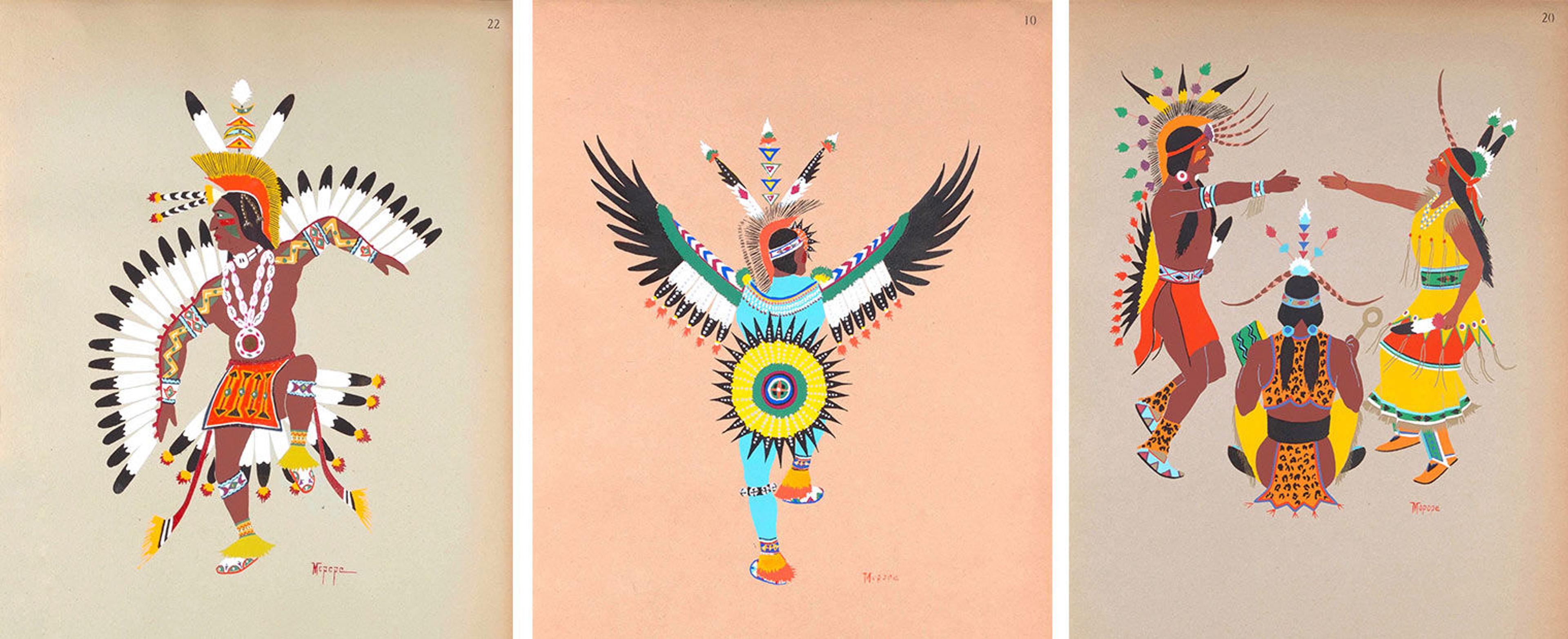
Pochoir plates from Oscar Brousse Jacobson, Kiowa Indian Art: Watercolor Paintings in Color by the Indians of Oklahoma (Nice, France: C. Szwedzicki, 1929). From left: Eagle Dance by Stephen Mopope, Eagle Dance by Mopope, Wedding Ceremony by Mopope
The five Native American artists represented in Kiowa Indian Art—Spencer Asah (1905–1954), Jack Hokeah (1901–1969), Lois Smoky Kaulaity (1907–1981), Stephen Mopope (1898–1974) and Monroe Tsatoke (1904–1937)—are all members of the Kiowa Six, a group of artists born in Oklahoma in the early twentieth century. Their distinctive painting style is characterized by solid color fields flatly applied with a neutral background. Kiowa Indian Art is a striking portfolio with thirty vivid pochoir prints reproducing paintings from the collection of Oscar Brousse Jacobson, a Swedish born American painter and director of the Fred Jones Jr. Museum of Art at The University of Oklahoma.
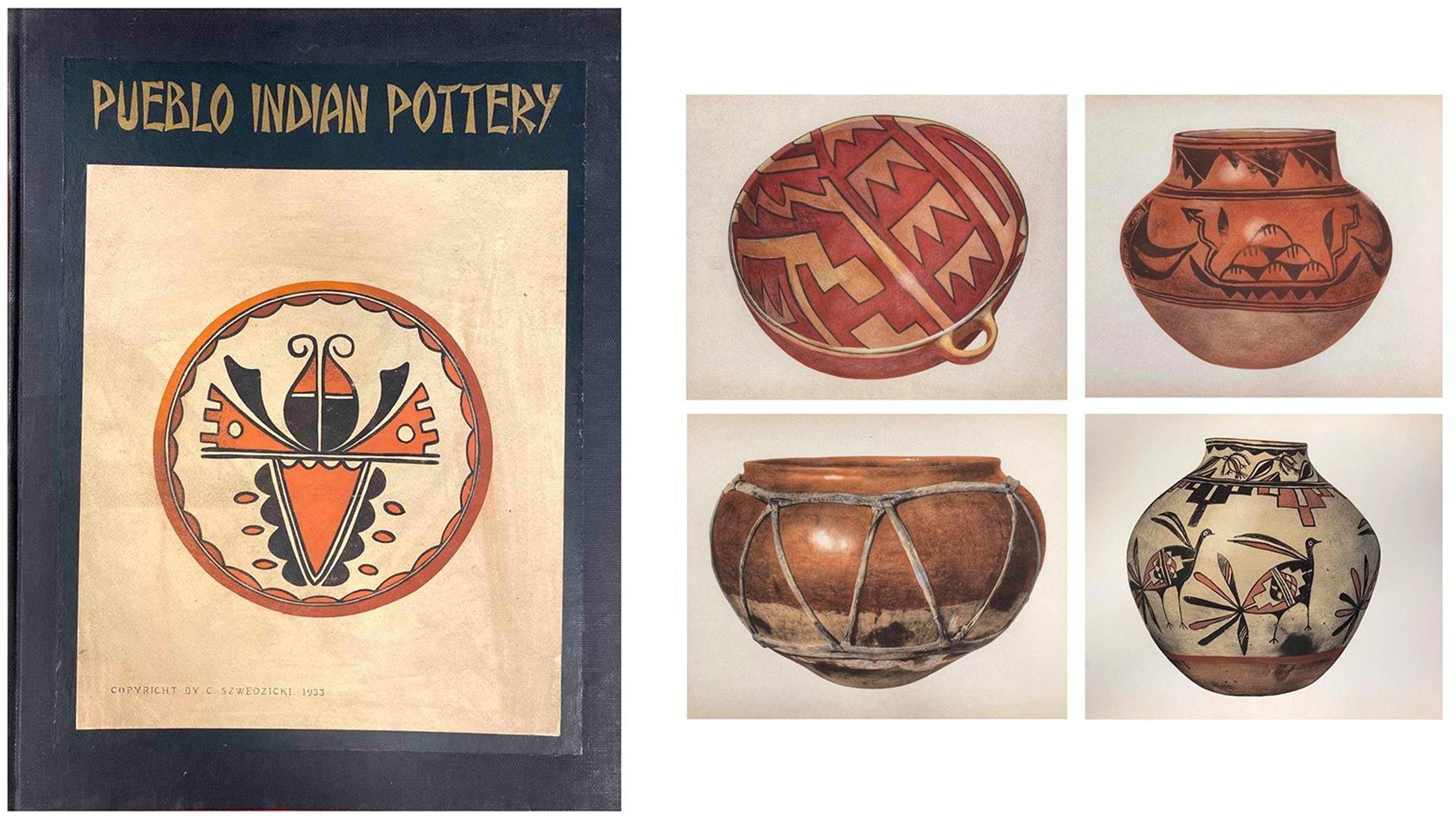
Kenneth Milton Chapman, Pueblo Indian Pottery: 50 Reproductions in Color From Specimens in the Famous Collection of the Indian Arts Fund (Nice, France: C. Szwedzicki, 1933—1936). The four plates at right are reproduced as full-sized individual plates in Chapman’s review of pueblo pottery.
The second Szwedzicki publication in Watson Library, Pueblo Indian Pottery, reproduces fifty color photo-lithographic plates from the collection of the Indian Arts Fund. Represented are ceramics from seventeen Pueblo villages in the Rio Grande—including Santa Ana, Santa Clara, Santo Domingo, San Juan, and Taos—and jars used for storing water, washing and mixing bread, carrying water from springs, and for rituals.
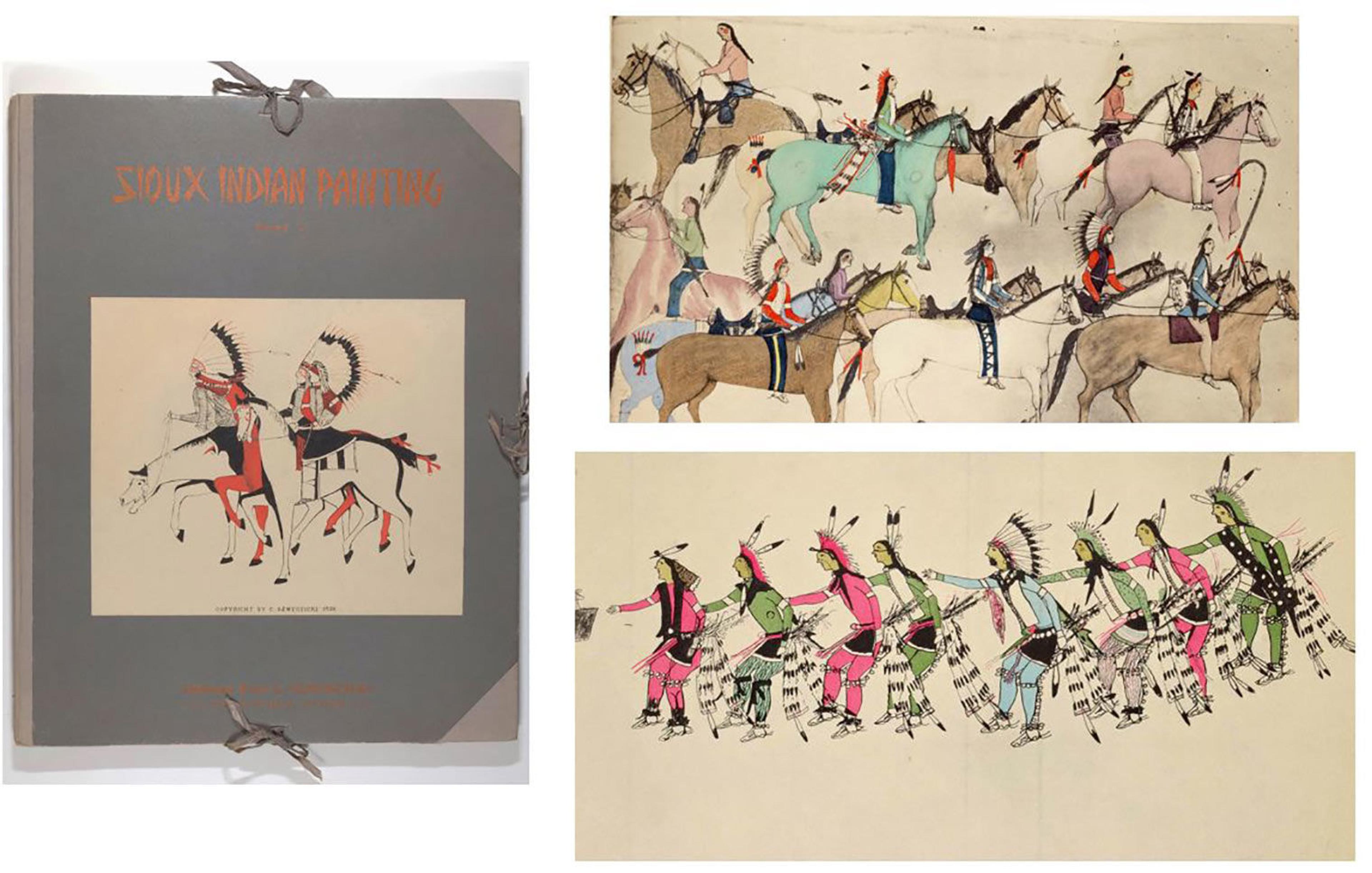
Sioux Indian Painting (Nice, France: C. Szwedzicki, 1938, 2 volumes) Purchase, Friends of Thomas J. Watson Library Gift, 2019. Above right: The end of the Battle of Little Big Horn. Warriors retiring from the battlefield leading captured horses. Ledger drawing by Amos Bad Heart Bull (Volume II). Below right: Public dance in honor of the warrior He Dog. Ledger drawing by Amos Bad Heart Bull (Volume II)
Sioux Indian Painting, the third Szwedzicki publication in the library’s collection is a large, two-volume set with fifty brightly colored, oblong plates. The second volume presents the ledger art of Amos Bad Heart Bull (ca. 1868–1913), which includes the Battle of Little Big Horn (1876).
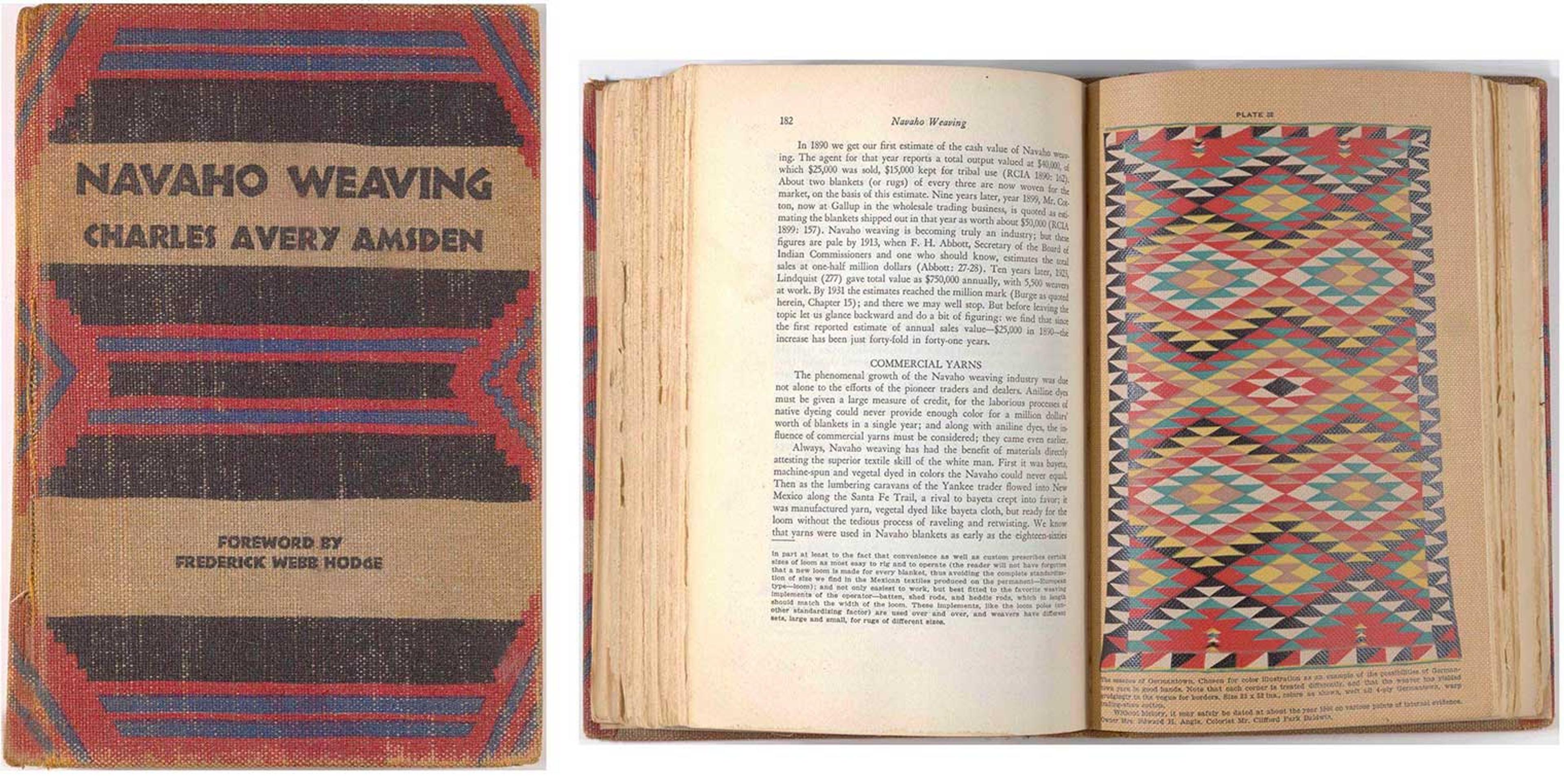
Charles Avery Amsden, Navaho Weaving, Its Technic and History (Santa Ana, California, Fine Arts Press in cooperation with the Southwest Museum, 1934). The plate at right is one of twelve colored illustrations printed on tightly woven buckram cloth.
Navaho Weaving, Its Technic and History is a heavily illustrated, essential text on weaving with decorative buckram cloth boards depicting a third phase chief's blanket design on the cover. This comprehensive compendium describes the techniques of traditional weaving including hand weaving, looms, native dyes and methods, and classification of blanket and rug categories including mantas and serapes. Specific dyeing details such as “madder turns bright yellow under nitric acid” distinguish this practical, valuable resource. The book also provides a detailed history from the first domesticated sheep of the sixteenth-century to nineteenth-century commerce expansion to the time of the book’s publication. Maps and a color fold-out illustration of a Chief White Antelope blanket further illuminate this indispensable resource.
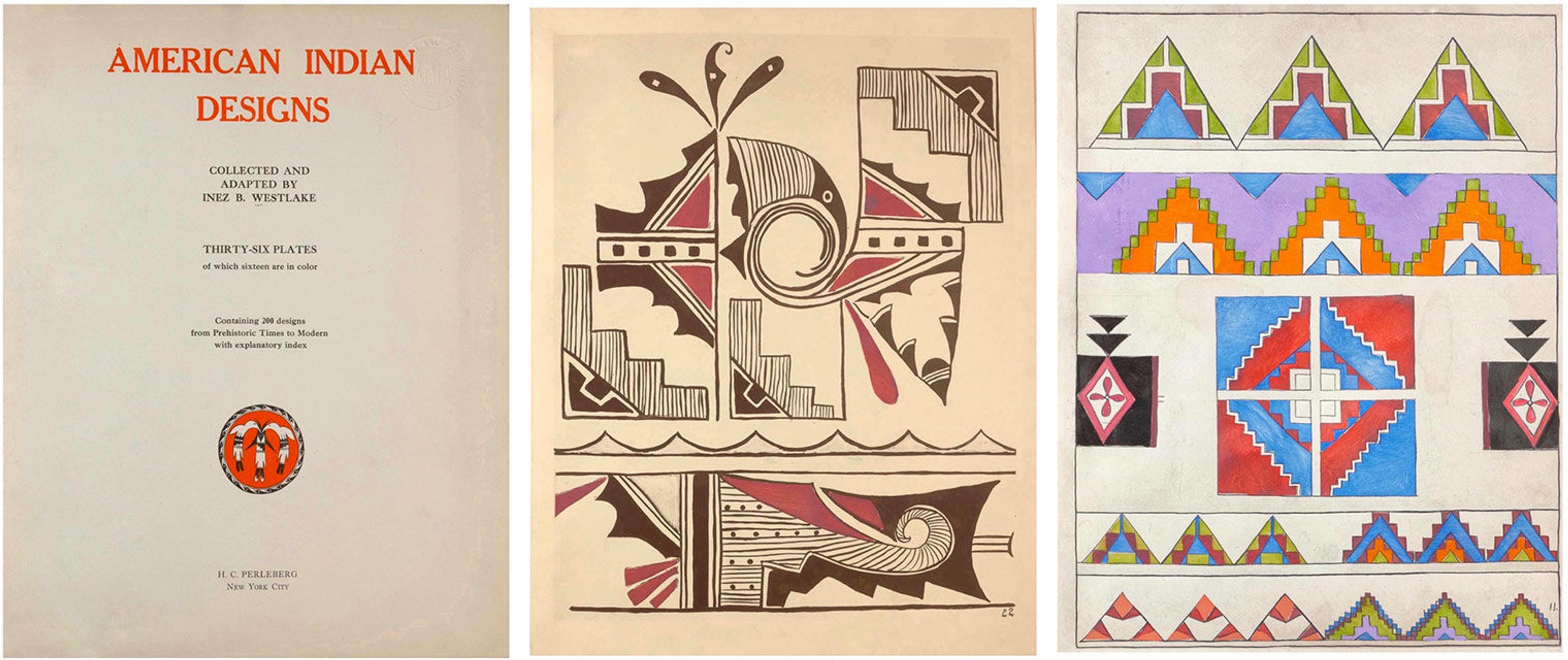
Inez B. Westlake, American Indian Designs (Philadelphia : H.C. Perleberg, 1925–1930, 2 volumes). Title page and two plates from Volume I
Inez Westlake’s two-volume set, American Indian Designs, contains seventy-two lithographic plates illustrating over four hundred designs found on basketry, ceramics, beadwork, rugs, and dolls with an explanatory index. Twenty-three of the plates are hand colored.
Stay tuned for Part 2 of this series, which focuses on contemporary Native American art.
